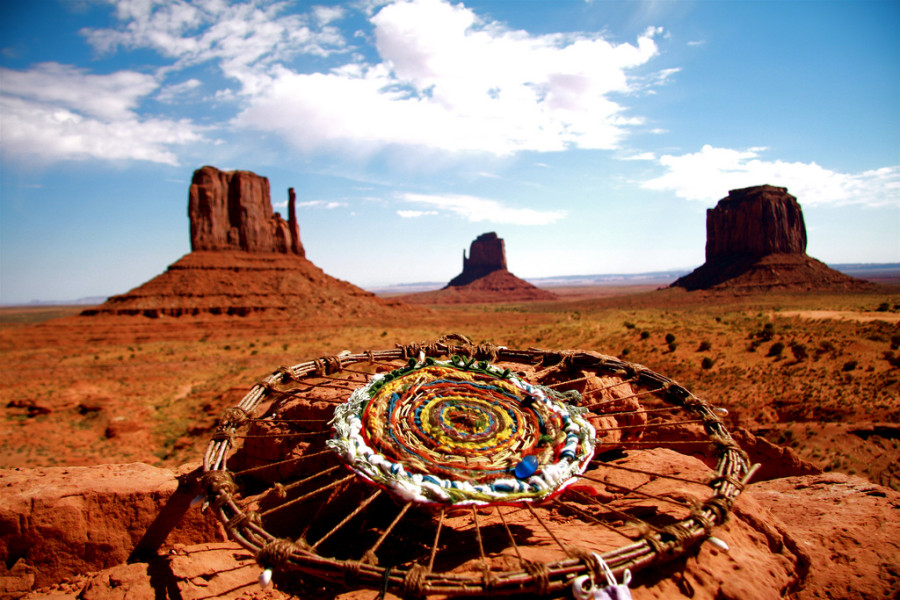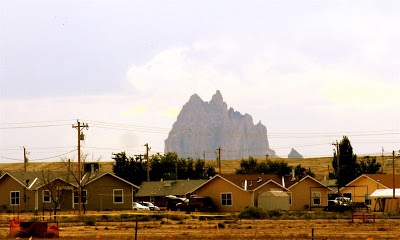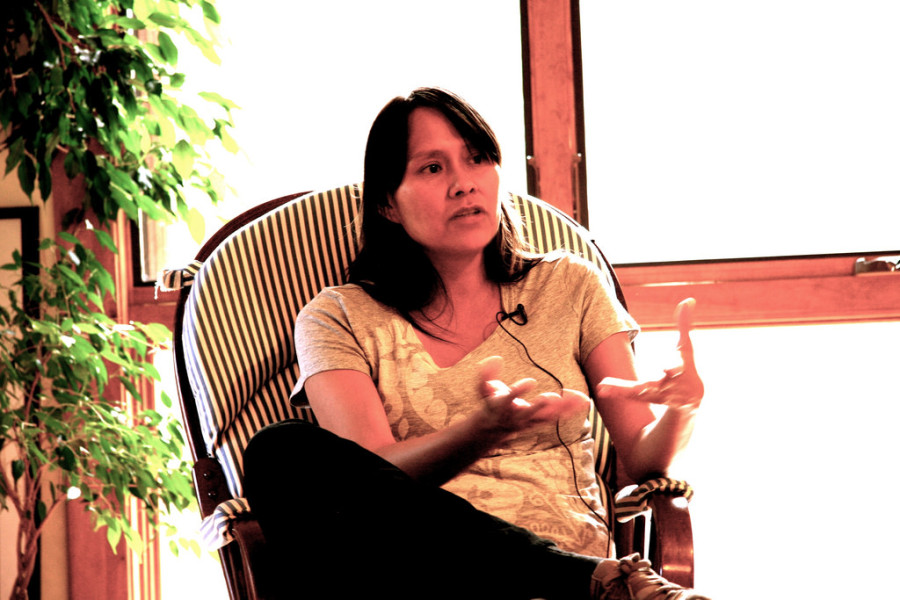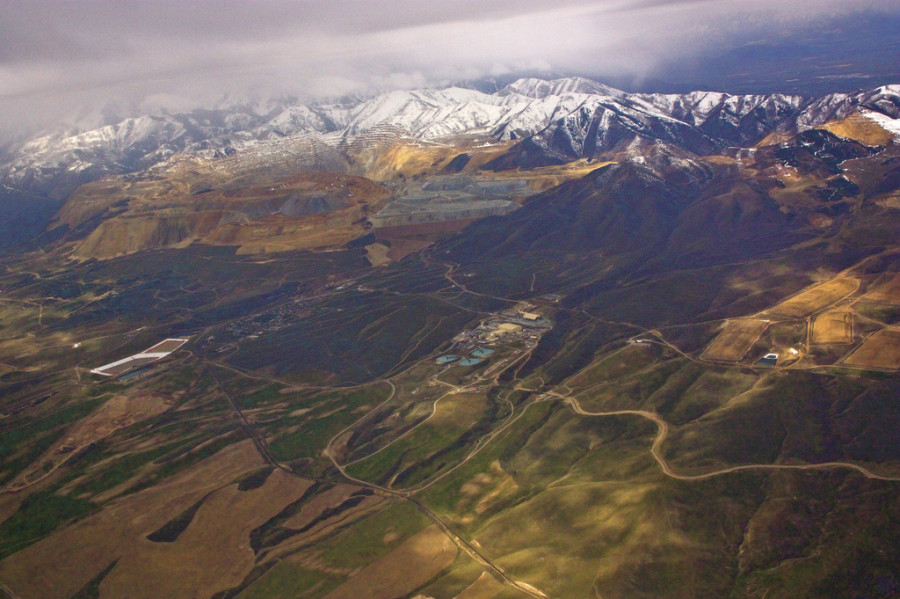Shiprock

In this magnificent southwest desert, a person cannot help but notice rocks and boulders. Peculiar stone outcroppings and plateaus highlight the striking landscape. There is also a mysterious sense that stories are written in the layered strata of the ancient mountains. We are four days in on our southwest journey with WEA’s Advocacy Delegation: Promoting Energy Justice on the Navajo Nation. Our delegation has come to learn about the cultural history and environmental justice movements of this region from its vibrant and resilient people, the Diné (Navajo).
As we meet with Diné leaders, we discuss at length and try to comprehend the complex and contrasting layers of politics, cultural wisdom, history, land disputes, sustainable practices, spiritual traditions, and unresolved societal wounds that are all part and particle of these communities. They are as deep and old as the colorful strata.

The Diné have names for the special stones that mark the landscape, which indicate the significant role these sacred sites have in Navajo mythology and tradition. The town of Shiprock in northwest New Mexico is named after a large stone formation that rises up from the high desert plains. We learn that the Diné word for this outcropping is actually, Tsé Bit’aʼí, “rock with wings.” Upon hearing this, it occurs to me that there is a powerful and startling vision rising up from Indian country right now that is ready to fly on these ancient, strong wings.
At this time of terrific environmental peril, it seems the very point of origin for the promise and possibility of envisioning a clean and just energy economy, and a healthy land ethic for Americans, may well reside on the Navajo Nation—here where some of the greatest environmental injustices in the country have been perpetrated. And in stark contrast, within the same communities where the spiritual and cultural traditions of the people are profoundly connected to the Earth in respectful, harmonious and sophisticated ways. When you listen to the stories of the people on these indigenous lands—stories of immense hardship and heartbreak, yet so much beauty and determination—you know that this is where energy justice in the U.S. must begin.
The historical targeting of indigenous lands and communities for destructive industrial projects like coal-fired power plants, mines, and hazardous waste facilities is an ongoing and dirty secret of life in America. This detrimental practice was furthered during the oil crisis in the 1970’s when corporations were searching for more fuel sources. Most Native American lands were designated as “National Sacrifice Areas” by the federal government, which tragically opened the door to big energy companies.
On Saturday of our Delegation, we met with Wahleah Johns, co-founder of the Black Mesa Water Coalition. Wahleah is a legend out here as a successful ten-year plus veteran of the struggles on the Navajo Nation. She is also very active in climate and environmental justice networks. Wahleah is from the community of Forest Lake on the Navajo Nation, which is located near the Peabody Western Coal Company’s Black Mesa mining operations. Wahleah knows first hand about the devastating effects of coal mining, relocation, groundwater depletion and land exploitation. She is also a woman of great vision.
 Wahleah deftly and lovingly attends to her young daughter and baby girl while managing to cook dinner for them and talk to our delegation about her recent project.
Wahleah deftly and lovingly attends to her young daughter and baby girl while managing to cook dinner for them and talk to our delegation about her recent project.
“Our goal is to care for our communities and for the land. We are here to protect our Mother Earth and our people, we don’t have to sacrifice one for the other. What we are working on now is to install solar panels on abandoned mine lands. There is a lot of reclamation land on Black Mesa and we asked, what can we do with this destroyed land and how can we give back to the community. We are excited because we presented the solar panel proposal to the local community members from Black Mesa and they were interested in it. At first, I was nervous because these are coal-mining people who have their incomes at stake. But the community is interested. It’s really exciting.”
Wahleah and her group are now deeply involved in a research and planning phase, which includes creating an LLC so that the community can take ownership of the project. She tells us, this is a “poetic” project, taking what has been made toxic and turning it into something of value.

Imagine transforming a carved-up mountainside, draped in toxic waste, into a solar farm that cares first for the local community and then feeds customers with clean, renewable energy. Of course, the process of transitioning from a fossil fuel based economy to a clean energy economy is complicated here on the Navajo Nation, but so it is across the country. Yet, with Diné women leaders in the forefront, grassroots groups in the southwest are gaining ground day-by-day toward a sustainable economic future. While surely a mountain of work and obstacles lie ahead, maybe this is the very moment we will see energy production and water management given back to the rightful keepers of these lands and resources.
Maybe this could be the very action that awakens the country to the need for energy justice, and also gives people the courage to face the looming energy, water and climate crises. It could very well be that the Diné will lead the way through their model of restoring abandoned mine lands, transition to clean energy, care for local communities, and a deep understanding that is time for everyone to respect the beauty, mystery, and natural laws of our Mother Planet. My sense is that something quite extraordinary is happening here on the Navajo Nation—one of the most precious, yet often forgotten, communities in America. Before nightfall, I take one last look at the reddish-gold rock formations that surround us. Faces of the ancestors seem to emerge from the weathered stone, ancient faces that look to us to take responsibility at this time of great peril and possibility.
By Osprey Orielle Lake, WEA Advocacy Delegate
